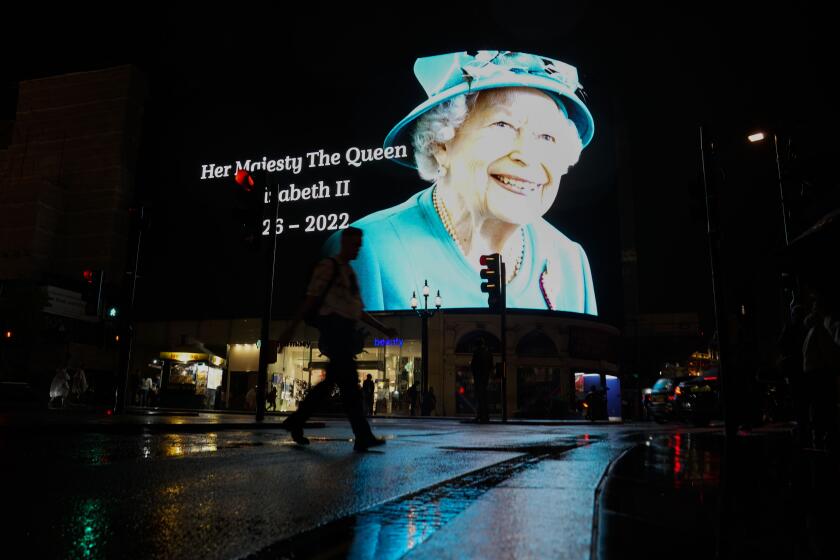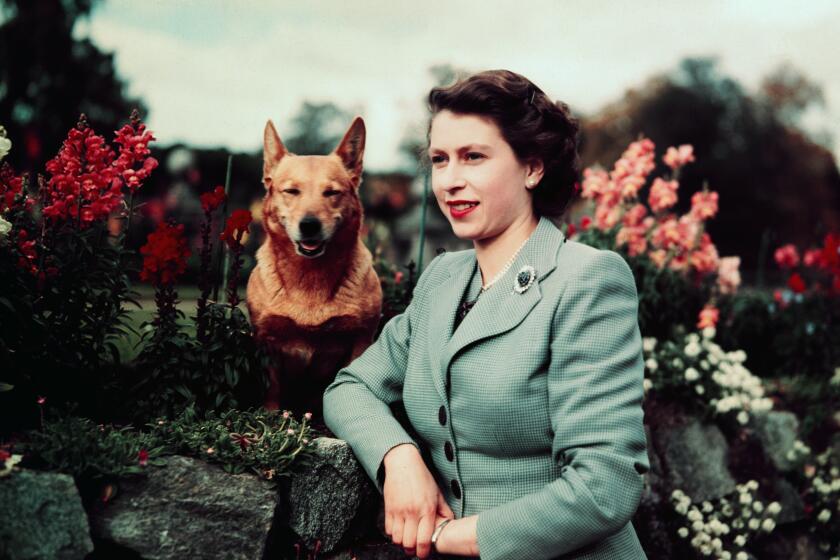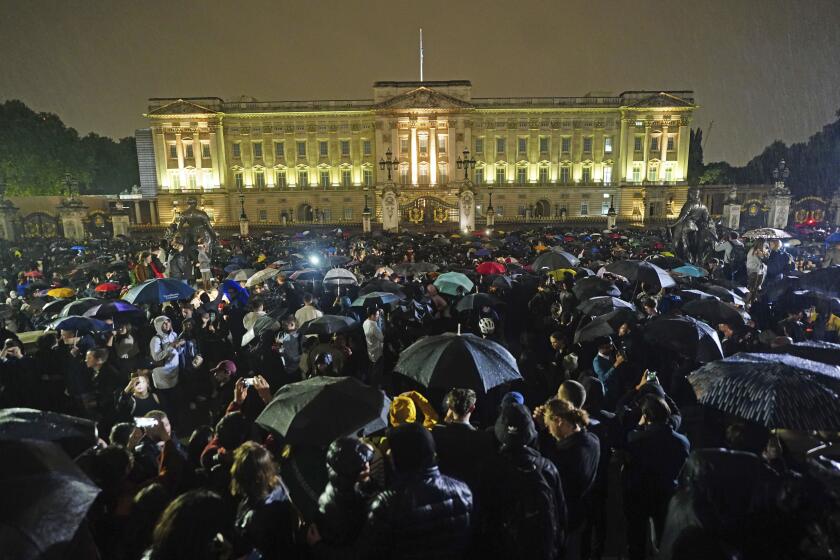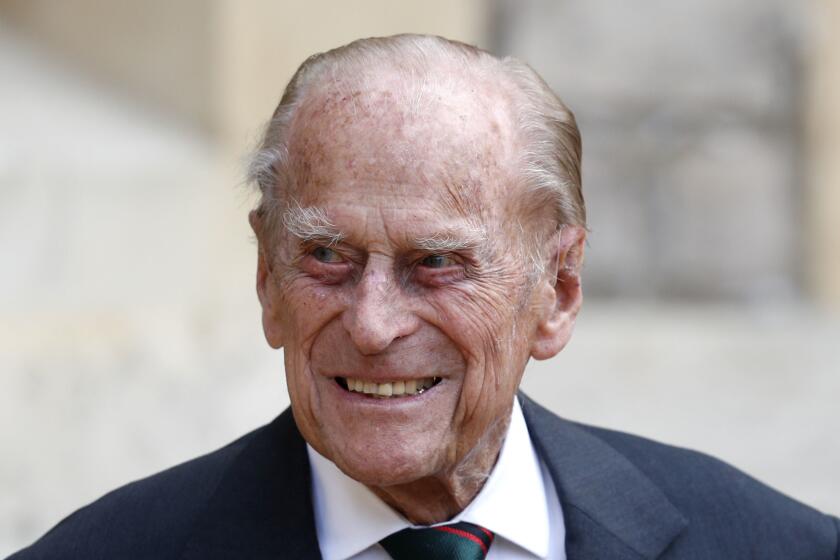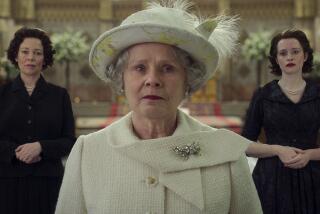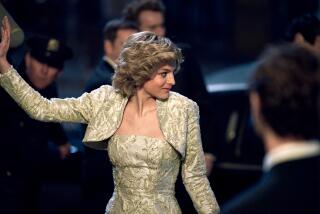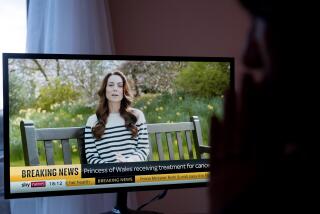Queen Elizabeth dies at 96, reigned longer than any other British monarch

Queen Elizabeth II saw more than a dozen prime ministers come and go during her record-breaking 70-year reign.
LONDON — She was born a princess but never intended to be queen. When her father became king after his brother’s shocking abdication, she was asked if it meant that she too would be Britain’s sovereign one day, to which she replied thoughtfully, “Yes, I suppose it does” — then didn’t mention it again.
That unassuming air turned out to be a hallmark of the longest reign by a monarch this country has ever known, seven decades of steadfast service and stately splendor that saw postwar Britain transform from an outsize, if insular, imperial power into a modest, multicultural European nation. Queen Elizabeth II reigned so long that most of the U.K.’s 68 million people — and, indeed, most people on the planet — have known no other person on the British throne.
Her death Thursday, at her summer home in Scotland, seemed to come suddenly, only two days after she was pictured smiling and ready to greet her 15th prime minister, a long line stretching back to Winston Churchill. It struck the United Kingdom with the force of a body blow, adding to the uncertainty that the country is facing amid an energy crisis, rampant inflation and a change in political leadership.
But what seemed unshakably secure to many Britons was the legacy the queen left as a beacon of unity, stability and continuity over the last 70 years.
“Her Majesty Queen Elizabeth II was more than a monarch,” President Biden said in a statement Thursday. “She defined an era.”
“Queen Elizabeth II was the rock on which modern Britain was built,” said Prime Minister Liz Truss, who heads what until Thursday was formally known as “Her Majesty’s government” and is now “His Majesty’s government,” under new King Charles III.
As news of her death quickly swept the country, flags at Buckingham Palace were lowered to half-staff, church bells rang, BBC played “God Save the Queen” and thousands of people solemnly placed flowers outside Windsor Castle as the second Elizabethan age came to a close.
“I know her loss will be deeply felt throughout the country, the Realms and the Commonwealth, and by countless people around the world,” the new king said in a statement.
During Elizabeth’s time on the throne, Britain’s class system continued to thaw, manners and morals were revolutionized, the Beatles rocked a generation, a stolid British industry gave way to highflying finance, and Britons stunned the world by voting to leave the European Union. A once-homogeneous society became a cosmopolitan one, and extraordinary technological advances swept even an ancient monarchy into the television and the internet age, with an Instagram account and a dedicated royal-watching channel on YouTube.
In the midst of it all was the woman whose diminutive figure was instantly recognizable in her simple but impeccably tailored suits, sensible shoes and slightly old-fashioned hats.
Photos of Queen Elizabeth II’s life and reign as British monarch.
Indefatigable in dispatching her official duties, she traveled the length and breadth of Britain and around the globe to meet the subjects of her kingdom and commonwealth, who turned out by the millions to see her. At home at Buckingham Palace, she received crowned heads, presidents and international luminaries, hosting state dinners replete with pomp and circumstance and the glitter of fabulous jewels.
Since 2016, she even managed to rule the new world of streaming services as the subject of the Netflix series “The Crown.” One of the most expensive television series in history, it has won 21 Emmys and the hearts of American viewers, many of whom were previously unaware of Elizabeth’s remarkable career.
Her dedication to her royal duties flagged only slightly toward the very end of her life, as more assignments and trips were delegated to her heirs. Even then, few Britons ever entertained the mortality of their long-serving monarch before news broke in late 2021 of an overnight hospital stay for tests and then a doctor-ordered two-week rest.
By then, she had recently become widowed after 73 years of marriage to Prince Philip. At his funeral in 2021, television cameras beamed images around the world of a small, black-clad nonagenarian sitting by herself in her grief, less an exalted figure than a bereft and lonely one. Subsequent photos of her looking more hunched and using a walking stick underlined the increasing frailty of a monarch whose upright bearing had seemed part of her job.
Her death came after a number of recent health scares, including a bout with COVID-19, trouble walking and an overnight hospital stay. Members of the royal family, including her four children, on Thursday rushed to Balmoral Castle to be by her side after doctors “concerned for Her Majesty’s health” ordered her to remain under their supervision. No cause of death was announced.
In many ways, she was a quintessentially upper-class “county” Englishwoman at heart, unassuming and reserved, most comfortable roaming her country estates with her horses in their stables and her dogs at her heels.
Her children, including the new king, and other “minor royals” have all seen the tawdry details of their private lives splashed in the tabloids. Not so Elizabeth, who in spite — or because — of her sense of stately aloofness was easily the most popular member of the royal family.
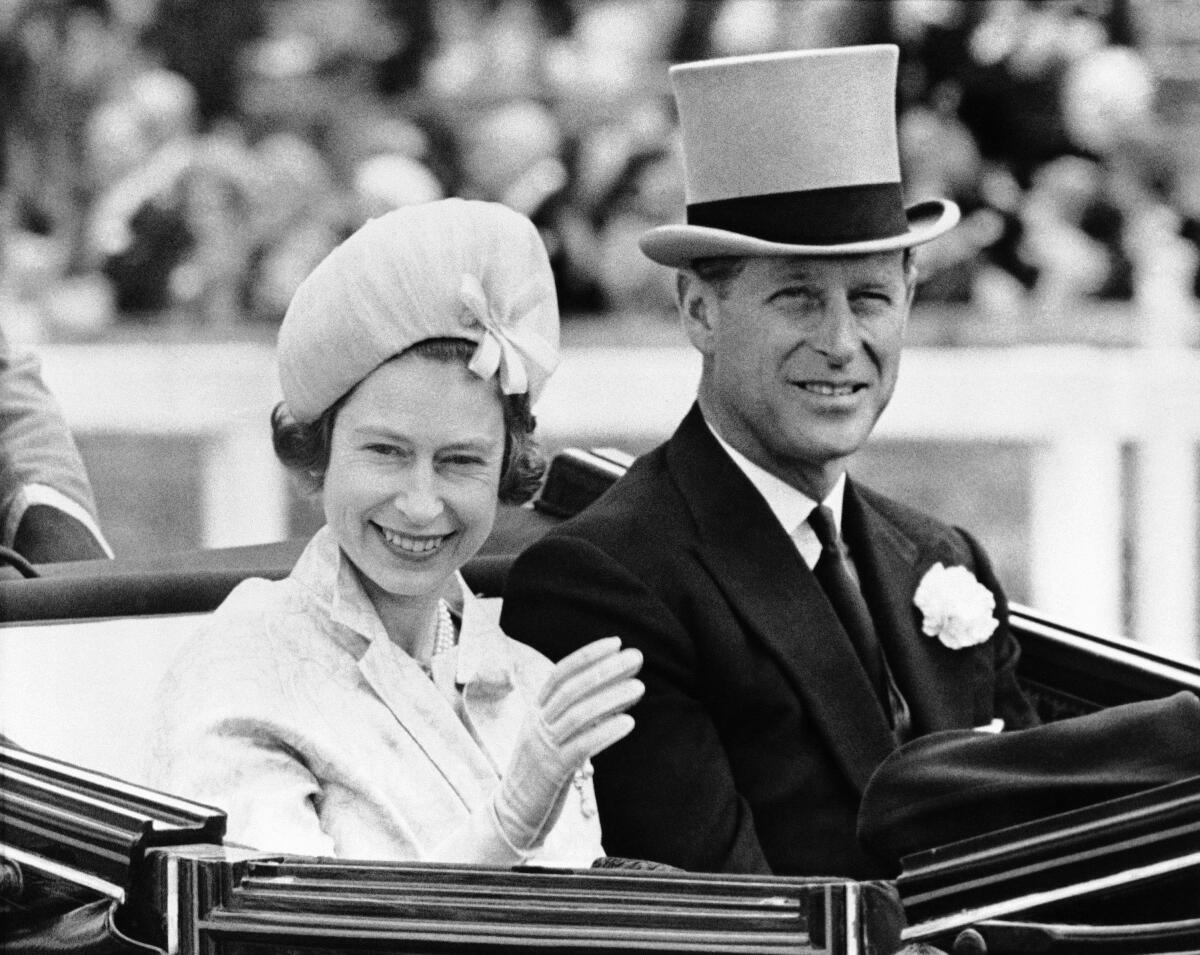
There were the occasional missteps, such as the palace’s sluggish response to the national upwelling of grief upon the death of Princess Diana in a car accident in 1997. During harder times too, voices grumbled about the millions of pounds in taxpayer money spent on supporting the glamorous lifestyles of princes, princesses and assorted hangers-on of an undemocratic, hereditary institution.
Nonetheless, public admiration and affection for her grew in warmth and intensity as the years wore on, uncorked — like the many bottles of champagne — during lavish celebrations marking the notable anniversaries of her reign: a Silver Jubilee in 1977 (for 25 years), Gold in 2002 (for 50), Diamond in 2012 (for 60) and a Platinum Jubilee in June to mark 70 years on the throne.
“Now that everything else in our society seems to shake and dissolve around us, this element of secure continuity in our affairs must seem even more precious,” the staunchly royalist Daily Telegraph wrote in an editorial for the Silver Jubilee.
The effusive tributes during her life and the emotional outpouring at her death were especially poignant in light of the fact that, through much of her girlhood, few thought she would ever become queen.
She was born April 21, 1926, in a townhouse off London’s tony Berkeley Square. Nightingales may not have sung at her birth, but a government minister was at the event to authenticate that the infant truly belonged to the royal house, as opposed to being an impostor smuggled in from outside.
She was the first child of Prince Albert, the Duke of York, and the first grandchild of the reigning King George V. Technically, she stood third in the line of succession, after her uncle David, the Prince of Wales, and her father. But everyone assumed that David would eventually marry and have children whose claims to the throne would trump hers.
When she was just a few weeks old, the princess, wrapped in a robe worn by Queen Victoria’s babies, was christened Elizabeth Alexandra Mary after her mother, her great-grandmother (consort of Edward VII) and her grandmother (consort of George V), respectively.
But the family called her “Lilibet,” because of the way the little girl pronounced her own name. It was an endearment that stuck with her into adulthood and was chosen as the name for one of her great-granddaughters, the daughter of Prince Harry and his wife, the former actress Meghan Markle.
Photos show Elizabeth as a happy child with blue eyes, rosy cheeks and curly locks. The king doted on his granddaughter; at 2½, she also managed to impress another august Briton as something of “a character,” with traits that would later prove useful.
“She has an air of authority and reflectiveness astonishing in an infant,” Winston Churchill wrote in a letter to his wife.
Queen Elizabeth II, who turns 90 on Thursday, became Britain’s longest-reigning monarch on Sept. 9, 2015, surpassing her great-great-grandmother Queen Victoria.
A week after her third birthday, the princess made the cover of Time magazine in a pensive pose with her head propped against her left fist. It was the first of 10 Time covers on which she appeared.
Life for the princess at home at 145 Piccadilly, in the heart of London, was pleasant and pampered, and enlivened by a menagerie that included ponies, dogs and birds, which augured a lifelong love of animals.
Her life, and the course of British history, changed irrevocably after a tumultuous series of events in 1936.
In January, the ailing George V died; his son David was immediately proclaimed King Edward VIII. But before the year was out, the new king stunned the nation and precipitated a constitutional crisis by declaring his love for an American divorcée, Wallis Simpson, and abdicating after 11 months on the throne.
When his younger brother, the Duke of York, succeeded him as George VI, Elizabeth’s governess told the girl to get ready to move to Buckingham Palace.
“What? You mean forever?” the 10-year-old princess asked.
She and her younger sister, Margaret, were instructed to curtsy before their father. Elizabeth was now the heiress “presumptive” (not “apparent,” in case her parents should produce a son, who — at the time — would automatically elbow past her in the line of succession).
Years later, Princess Margaret recalled that her sister, always the more serious and responsible of the two, absorbed the new situation with equanimity: “When our father became king, I said to her, ‘Does that mean you’re going to be queen?’ She replied, ‘Yes, I suppose it does.’ She didn’t mention it again.”
Grooming for a life of duty began in earnest.
Britons from all walks of life converged on the ornate gates of Buckingham Palace in central London.
The queen in training took lessons on Britain’s unwritten constitution from a tutor hired from Eton, the country’s most exclusive boys’ school, and learned to speak French, play the piano and sing. To allow her to socialize with girls her own age, officials approved the formation of a Girl Guides company, the equivalent of a Girl Scout troop, at Buckingham Palace.
With the outbreak of war in 1939, the two princesses were sent away from London to the countryside. Their mother swatted away suggestions that the girls be removed temporarily to North America.
“The children won’t go without me. I won’t leave the king. And the king will never leave,” she said.
Through most of the war, the sisters stayed at Windsor Castle, sometimes scooting down to the dungeons when the Luftwaffe flew overhead. After turning 18, Elizabeth joined the Auxiliary Territorial Service to do her part in the war effort, learning to drive and maintain trucks.
On V-E Day, the king gave permission to his daughters to join the crowds of revelers in the streets of London — a rare chance for them to taste life beyond the velvet rope.
“I remember we were terrified of being recognized, so I pulled my uniform cap well down over my eyes,” Elizabeth recalled later in a rare interview. “I remember lines of unknown people linking arms and walking down Whitehall, all of us just swept along on a tide of happiness and relief.”
By then, something else had caught her eye: a dashing navy lieutenant who was the son of the late Prince Andrew of Greece and, like her, a great-great-grandchild of Queen Victoria. She had first met Prince Philip when they were children; as teenagers, they corresponded, and as young adults, they courted.
They tried to keep their budding romance quiet. With girlish innocence, Elizabeth put a photo of a bearded Philip on her desk, thinking that the facial hair would prevent people from recognizing him. It didn’t work.
On July 10, 1947, the king and queen announced the “betrothal of their dearly beloved daughter” to Philip, who had renounced his claim to the Greek throne and become a British subject. Although some muttered darkly about their princess marrying a “foreigner,” most of the country celebrated the engagement.
The princess and the newly named Duke of Edinburgh exchanged vows in Westminster Abbey on Nov. 20, 1947, a cold and blustery day. The royal wedding was suitably grand, yet also thrifty: Elizabeth’s dress was made using fabric bought with the same ration coupons that other British brides had to use after the war, and the gold given to her from Wales for her wedding band was enough to create two, so she set some aside for Margaret.
The nuptials launched a union that would last until Philip’s death in April 2021. From time to time, stories arose of tension between the couple, and many Britons were both amused and appalled by verbal gaffes the Duke of Edinburgh committed at official events that came off as insensitive at best, or racist and sexist at worst.
The Duke of Edinburgh, Queen Elizabeth II’s husband, was the undisputed master of the British royal household for more than seven decades.
But there was never a hint of marital discord in public — unlike the relationship troubles that her children happily aired in the media — and Philip was constantly at his wife’s side at official functions. In 1997, marking their 50th anniversary, the queen described her husband as “my strength and stay all these years.”
They had been married less than a year when their first child, Charles Philip Arthur George, was born Nov. 14, 1948. A daughter, Anne, followed in 1950, and two more sons, Andrew and Edward, in 1960 and 1964.
By the end of the ’40s, George VI’s health was declining, and more and more of his royal duties fell on his elder daughter’s shoulders. En route to Australia and New Zealand on behalf of the king at the end of January 1952, she and Philip stopped in Kenya, where they stayed in a treetop lodge and marveled at the big game.
The African idyll lasted barely a week. In the early hours of Feb. 6, 1952, George VI died in his sleep in England. It took several hours for word to reach Philip, who then gently broke the news to his wife.
At 25, she was now queen.
Looking shaken and drawn, Elizabeth arrived in London the following day, dressed in black and greeted at the airport by a somber semicircle of high-ranking politicians, including Churchill, the prime minister, to whom she said: “This is a very tragic homecoming.”
On Feb. 8, her accession was made official at a solemn but colorful ceremony in St. James’s Palace in London.
“I pray that God will help me to discharge worthily this heavy task that has been laid upon me so early in my life,” the new queen said.
She laid a wreath on her father’s coffin and signed it from “your loving and devoted daughter … Lilibet.” But from then on, her official signature was to be “Elizabeth, Regina.”
More than 7,000 people attended her coronation in Westminster Abbey; hundreds of thousands more ecstatically lined the streets by Buckingham Palace and Trafalgar Square to catch a glimpse of their queen in her ornate horse-drawn coach; and millions watched it live on television, the first-ever broadcast of a British coronation, to which Elizabeth had originally objected but then consented after a storm of protest by the BBC and other news media.
During her long reign, she tried to stay in step with the times — for example, by abolishing debutante “coming-out” parties at Buckingham Palace. She took the unprecedented step of sending her son and heir, Charles, to a boarding school, the first prince of the blood to attend classes outside Buckingham Palace.
But when it came to upholding many of the traditions and protocols that have built up around the monarchy over the centuries, the queen was unyielding, convinced as she was of her role as the keeper of an ancient flame, which she did not want to see flicker and wane on her watch.
Elizabeth’s insistence on proper conduct and her devotion to tradition mirrored the attitude of her father, who referred to the royal family as “the firm.” It was an old-fashioned embrace of dignity, duty, decency, diligence and discretion, values inherited from Victorian times.
She scrupulously performed her duties as the titular ruler of Britain, skimming the newspapers each morning and “doing the boxes” — going through the Cabinet documents, policy papers and letters delivered to her daily in red attache cases. Acts of Parliament were confirmed with the declaration, “La reyne le veult,” Norman French for “The queen wishes it.”
Once a week, she met with the prime minister for a confidential discussion of current issues. “My God, she put me through it if I hadn’t done my homework,” said former Labor Party Prime Minister Harold Wilson, who called Elizabeth “the most professional head of state in the world.”
Breaking News
Get breaking news, investigations, analysis and more signature journalism from the Los Angeles Times in your inbox.
You may occasionally receive promotional content from the Los Angeles Times.
Publicly, she remained above party politics, always attending the state opening of Parliament but delivering the “Queen’s Speech” outlining the government’s agenda in the toneless accents expected of a politically neutral sovereign.
Privately, her relationships with the various prime ministers at the head of Her Majesty’s government ranged from almost affectionate, with Wilson, to somewhat prickly, with Margaret Thatcher, whose policies she was said to have considered divisive.
Although Britons generally admired their queen’s hardworking nature, she was not without her detractors.
A magazine editor — and peer of the realm — once derided the young Queen Elizabeth’s voice as “that of a priggish schoolgirl” and dismissed some of her entourage as “a second-rate lot,” and writer Malcolm Muggeridge poked fun at the monarchy as an “ersatz religion” and a “royal soap opera.”
Beyond the criticism were the threats to the queen’s and her relatives’ safety. Her daughter, Anne, was attacked by a would-be kidnapper not far from the gates of Buckingham Palace; a letter bomb was mailed to Prince Charles; an IRA bomb killed the queen’s cousin Lord Louis Mountbatten on his boat.
In 1981, an attention-seeking teenager fired six blanks directly at Elizabeth as she rode her horse down the Mall for the annual Trooping the Color ceremony.
And barely a year later, an intruder scaled the walls of Buckingham Palace early one morning and managed to wander into the queen’s bedroom, where she chatted with him calmly for 10 minutes until, on the pretext of getting him a cigarette, she summoned a footman who detained him.
“Danger is part of the job,” the queen said in 1961 when Prime Minister Harold Macmillan advised her to change her itinerary on a trip to Africa because of potential threats.
Her worldwide travels brought her to the U.S. through the decades, most recently in July 2010 , when she spoke before the U.N. General Assembly for the first time since 1957 and toured ground zero at the World Trade Center. She met every American president since her accession, with the exception of Lyndon B. Johnson, and seemed particularly taken with the Obamas.
One of her greatest challenges at home was negotiating the increasingly tricky world of the media and figuring out how to make the monarchy more accessible without cheapening it.
From the time she was a young woman, Elizabeth seemed generally to view Britain’s media, especially its scandal-hungry tabloids, as a fact of life to be tolerated but not admired.
“I suppose we shall read about it in the papers before we know it ourselves,” the former princess said dryly after her marriage about the prospect of getting pregnant.
The palace’s relationship with the news media increasingly became a source of headaches for a woman weaned on the value of classic British restraint.
Her grown-up brood felt no need to shy away from attention. Their peccadilloes were regular grist for the tabloids, especially the rocky marriage of Prince Charles and Diana and the playboy ways of Prince Andrew. The young royals, in turn, tried to use the media to their advantage, granting gut-spilling interviews of a kind the queen herself would never give.
Even as they lapped it up, the public found much of the royal family’s antics distasteful. In 1992, the palace was rocked by news of Charles and Diana’s separation, Anne’s divorce, Andrew’s separation from Sarah Ferguson and a fire at Windsor Castle.
When the government announced that it would foot the bill for repairs at the castle, recession-pinched Britons were outraged. By year’s end, the queen, one of the world’s richest women, was forced to agree to pay income tax for the first time and dubbed 1992 an “annus horribilis” in a taut-faced speech.
Even worse was Diana’s death in a car crash in Paris, while being pursued by paparazzi, in August 1997.
By then, Britain had changed beyond recognition from the country the queen had grown up in. Britons were more outward-looking and more emotional, and a touchy-feely new prime minister, Tony Blair, had just been elected.
Preferring to treat the death as a private family matter, the palace was caught off guard by the eruption of grief. The queen stayed secreted at Balmoral and made no public expression of mourning or statement of consolation to her people.
“Show us you care,” cried one headline, as more and more Britons began lambasting the royal family as a dysfunctional clan out of touch with reality and the masses.
Eventually, after pressure from the prime minister’s office, Elizabeth went on live television to “pay tribute to Diana myself” and speak to the nation “as your queen and as a grandmother.”
The palace’s misreading of the public mood set off another round of debate over whether the royal family had outlived its usefulness. Discussions also occasionally surfaced, as far back as the ’80s, as to whether the queen would abdicate to allow Charles, who is now 73, to become king while still in his prime, or even to bypass him altogether in favor of his elder son, William.
But the real royal watchers knew that such an idea would never occur to a woman who not only felt it her duty to serve to the end, in accordance with tradition, but who had also witnessed, as a girl, the constitutional and family crisis that an abdication could cause.
Eventually, the furor over Diana’s death faded, and the queen’s popularity rebounded, though she was tested again when Harry and Meghan, the Duke and Duchess of Sussex, announced in 2020 that they were stepping away from their royal duties and moved to Southern California. Scrutiny intensified after the couple appeared in a sensation-causing interview in 2021 with Oprah Winfrey, during which Meghan spoke of the racism and icy response to her concerns about her mental health that she endured from some in the monarchy, though she spoke warmly of the queen.
The tabloids breathlessly chased the story, and Elizabeth’s response was seen as overly tame.
“The whole family is saddened to learn the full extent of how challenging the last few years have been for Harry and Meghan,” the palace said after the interview aired. “The issues raised, particularly that of race, are concerning. While some recollections may vary, they are taken very seriously and will be addressed by the family privately.”
More embarrassment ensued from a lawsuit filed by a woman who said she had sex as a teenager with Prince Andrew in 2001 after being groomed for abuse by financier Jeffrey Epstein. In early 2022, the queen stripped her second son of his royal patronages and honorary military titles as the lawsuit played out.
But the scandal did not tarnish the reputation of Elizabeth herself, who remained a private person, partly to perpetuate the mystique of monarchy and partly from her upbringing as an Englishwoman who preferred a day out walking the dogs (mostly corgis) to cutting ribbons and making speeches. She enjoyed her grandchildren and, in her 80s, became a great-grandmother for the first time.
She was a fan of horse racing and, according to one account, liked spending her evenings the way “millions of other housewives do”: watching television or picking up a book, perhaps a whodunit by Agatha Christie, a biography of one of her ancestors or a thriller by Dick Francis.
Reared during a time of war and privation, the queen also reputedly went around Buckingham Palace at night turning out the lights to save electricity.
But she never forgot that it was her role to be a light to her nation, and to reign and serve as she had pledged when she was just 21: “I declare before you all that my whole life, whether it be long or short, shall be devoted to your service and the service of our great imperial family to which we all belong.”
Staff writers Steve Marble and Mary McNamara contributed to this report.
More to Read
Start your day right
Sign up for Essential California for the L.A. Times biggest news, features and recommendations in your inbox six days a week.
You may occasionally receive promotional content from the Los Angeles Times.
